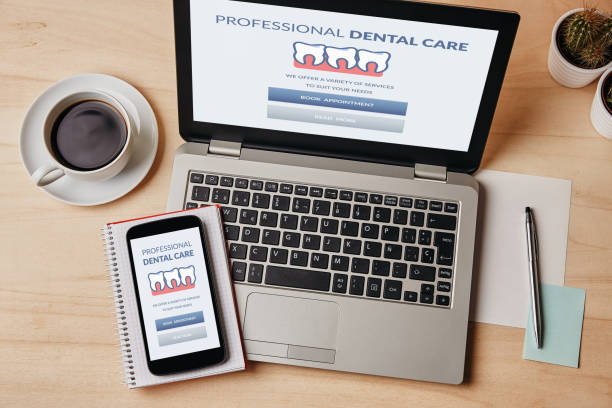
While dentistry is certainly a form of healthcare, it’s also a business model. In today’s marketplace, all successful businesses need an online presence. This certainly holds true for dentists and dental practices.
You will certainly lose business if you don’t have an effective website. However, creating the perfect dental website isn’t exactly easy either. To help, below are some dental website design tips that can help make your site a success.
HIPAA Standards
One thing you must keep in mind is that healthcare-related websites such as the websites of dentists and dental practices must abide by HIPAA standards. HIPAA stands for the Health Insurance Portability and Accountability Act.
Complying with this law requires some technical expertise. For example, you must keep all information submitted to the website in an encrypted form. This often requires obtaining an SSL certificate. HIPAA penalties for failing to comply with the law can be very severe. Don’t make this mistake. If patient info gets leaked, you could be in big trouble.
Digital Scheduling
Nowadays, not everyone who wants to make an appointment wants to do so by making a phone call. Instead, today, many patients expect they will have the ability to both schedules an appointment and fill out new patient forms online.
You should give them the ability to do this. This can increase convenience for patients and lower the workload of your receptionists. However, as previously mentioned, protecting patient data is mandated by the law.
Make sure to take care when crafting such a system and integrating it into your website. Make sure to work with professionals that have experience in the industry.
Calls to Action
Of course, dental marketing should be an important element of any dentist’s website. Your overall goal should be to convert as many visitors into paying patients as possible. To accomplish that, you must have clear calls to action on the website.
Include extremely simple instructions on how to sign up as a new patient. As previously mentioned, you should have the ability to schedule new patients right on the website. Make the process as easy as possible for them. Include links to do so on all relevant pages.
Ease of Navigation and Simplistic Design
In regards to web design in general, less is more. Many of the most successful websites have rather simple layouts. In regards to your own dental website, you want to make viewing and navigating the page as easy as possible.
While there may be piles and piles of content you want to include, try to simplify navigation down to five drop-down links on the main landing page. These should be clearly marked, and clicking them should do exactly what the user expects.
Pages that are hard to navigate will be abandoned in seconds. The same holds true for pages flooded with endless text and piles of links. This is even more so the case in the age of smartphones, in which usability and quickness are more important than ever.
SEO Geared Content
A good dental website will also likely have original content that can draw in an audience and hopefully convert visitors into paying patients. However, to hook people in, you need to make sure your content is search engine optimized.
SEO is very important for websites of any kind. Without quality SEO, many people will have trouble finding you at all. With fine-tuned SEO, however, your pages may come up first in relevant search results.
For example, if you perform dental implants, you may want to optimize an article going over the implant process with a search term like “dental implants Dallas.” Doing so will hopefully bring in people who are indeed looking to have a dental implant installed in the Dallas area.
Make sure the content is well written and useful to users as well. Google’s algorithms prioritize quality content over attempts to simply game the system lazily.
Like any successful business website, creating an effective dental website requires sound strategy, technical knowledge and hard work. Create a HIPAA compliant and search engine optimized website that supplies quality content with clear calls to action. Doing so, you’re sure to be able to convert many curious visitors into paying patients.